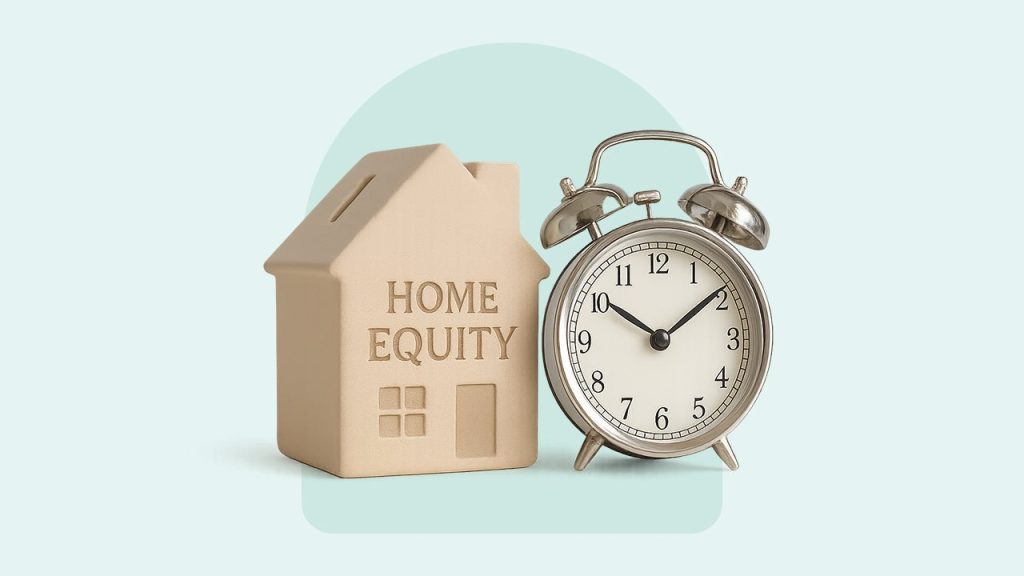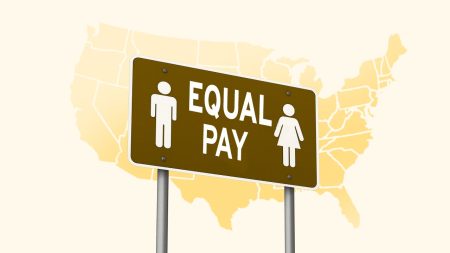Key takeaways
- How soon you can pull equity out of your home is not so much about time as it is about the size of your ownership stake.
- Most lenders typically require homeowners to have a minimum of 20% equity, and you’ll qualify for the best interest rates if you own around half of your home outright.
- After buying a home, there’s usually no waiting period to apply for HELOCs or home equity loans, but there are six- to 12-month restrictions in place for most cash-out refinances.
- The best time to take out home equity is when you have a small mortgage balance, a strong credit score and a low debt-to-income ratio.
If you’re contemplating tapping your home equity, you’re not alone: Almost 30 percent of homeowners say they would consider borrowing against their residence’s value, according to a new survey from MeridianLink, a loan-origination software provider. But nearly a quarter of them (23%) also admit to an incomplete understanding of home equity loans and lines of credit.
For example, when can they get approved for a loan? Do they have to own the home for a certain amount of time? In short, how soon can they tap their home equity for cash?
Actually, when you can pull equity out of your home is not so much a matter of dates as it is about the size of your ownership stake. Here’s all you need to know to time it right.
When can you access your home equity?
There isn’t a specific date on the calendar that dictates when you’re going to be able to access your home equity. Taking out a home equity loan or line of credit (HELOC) is not so much about “how soon” as about “how much” – as in, how much equity you have managed to accumulate. Lenders usually demand you have amassed an ownership ownership stake of a certain size.
At a minimum, “lenders typically want borrowers to have 20 percent of equity in their home,” Wendy Morrell, head of relationship retail at U.S. Bank, says. That means, you own that percentage of the home’s worth outright: It’s equivalent to the amount you paid for with cash, as opposed to borrowed funds. For example, if you bought a home with a 20 percent down payment, and financed the remaining 80 percent, you’d start off with a 20 percent equity stake right off. If you put down 50 percent of the purchase price, you’d have a 50 percent stake.
While 20 percent is the usual standard, some lenders will accept a smaller amount of equity – just 15 or 10 percent; some HELOC lenders even accept 5 percent – if you’re a very creditworthy applicant. (“In addition to the amount of equity you have in your home, your credit score and history, debt-to-income ratio and income history all are factors to the terms and rates,” Morrell notes.)
Is there a mandatory waiting period to access home equity?
Usually, there isn’t a mandatory waiting period for accessing your home equity via a second mortgage, which is what HELOCs and home equity loans are. But different lenders do have different rules. “Some banks may want to see how you pay on the first mortgage before allowing you to take out another,” says Darren Tooley, senior loan officer at wealth management firm Southfield, Mich.-based Cornerstone Financial Services, “while some lenders will do an equity loan or HELOC immediately after purchasing a home, as long as you meet their requirements.”
While second mortgages might be available right away, there generally is a mandatory waiting period for a cash-out refinance, which replaces your original mortgage with a new, larger one. This is known as a seasoning requirement, and it ranges from six to 12 months for conventional and FHA loans, Tooley says.
When is the best time to take equity out of your home?
Ultimately, the best time to consider a home equity loan is when you have a lot of equity – ideally, equal to about half of your home’s worth. Or, put another way, when the outstanding amount on your mortgage represents a relatively small chunk of your home’s value.
That’s because, when calculating how much to give you, lenders look at all your home-based debt: both the outstanding primary mortgage and the new amount you want to borrow, something called the combined loan-to-value ratio. “A borrower with a 95 percent total loan-to-value ratio will typically face a higher interest rate than someone with a 70 percent total loan-to-value ratio, since lower equity increases the lender’s risk,” says Denya Macaluso, vice president of residential lending at Michigan State University Federal Credit Union.
In short, the bigger your mortgage balance is, the less home equity you have to tap – and the more expensive tapping it will be.“The more equity you have in the house, the better interest rates you will usually have,” Tooley says, “with most lenders offering their best rates when there is 40 percent equity remaining in the home, after the loan closes.”
Keep in mind:
Good timing for tapping home equity also involves your finances in general. Even if you’ve amassed a large ownership stake, you still need a solid credit score, a relatively low debt-to-income ratio, and a steady income to get approved for a loan or credit line.
How is home equity calculated?
Determining your current level of home equity is pretty simple: First, estimate the market value of your home. Then, subtract the outstanding principal balance on your most recent mortgage statement.
So, let’s say your home is worth $500,000, and you currently owe $300,000 on your mortgage: You have $200,000 in total equity.
Remember you can’t borrow that full $200,000, though. Lenders usually require you to maintain a certain equity stake in the home. For example, if your lender requires you keep 20 percent equity untouched – financing up to 80 percent of the home’s value, in other words – you may be able to borrow up to $100,000.
What are the ways to tap into home equity?
There are three main ways to tap into your home equity, all of which have nuances that can make them better or worse fits for your finances:
- Home equity loan: These are fixed-rate loans that will offer a lump sum of money to be repaid over a set term, usually between five and 30 years. In many cases, you pay upfront closing costs, as with your original mortgage.
- HELOC: These are variable-rate lines of credit that feel more like a credit card, letting you withdraw funds up to a certain amount. You can spend for a set period, usually 10 years, then repay over an additional 10 to 20 years. Closing costs tend to be less, but many HELOCs come with annual fees and prepayment penalties.
- Cash-out refinance: A cash-out refinance will replace your existing mortgage with a new bigger one, as it includes a sum of ready money based on your available equity. It’s the most involved process of these three options, and it comes with a key question: Do you want to replace your current mortgage and interest rate with a new loan with entirely new terms?
Bottom line on when you can pull out home equity
Generally, you can tap your home equity fairly soon, applying for a HELOC or home equity loan even if you are a relatively new homeowner. You will, however, need to have enough equity – generally 15 to 20 percent of the home’s overall value — to satisfy the lender’s requirements. And frankly, if you financed most of the purchase, you won’t have much money to play with.
To qualify for a sizable loan, and for the lowest rates, you ideally should have an equity stake of 50 percent or more, a threshold that often takes at least a decade of on-time mortgage payments to hit. And in addition to your equity level, get your financial house in order prior to applying. A high credit score and a low debt-to-income ratio will increase your odds of getting approved — and the best terms possible.
Read the full article here









